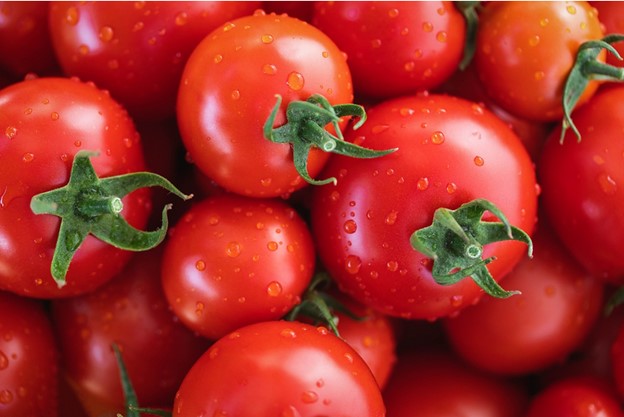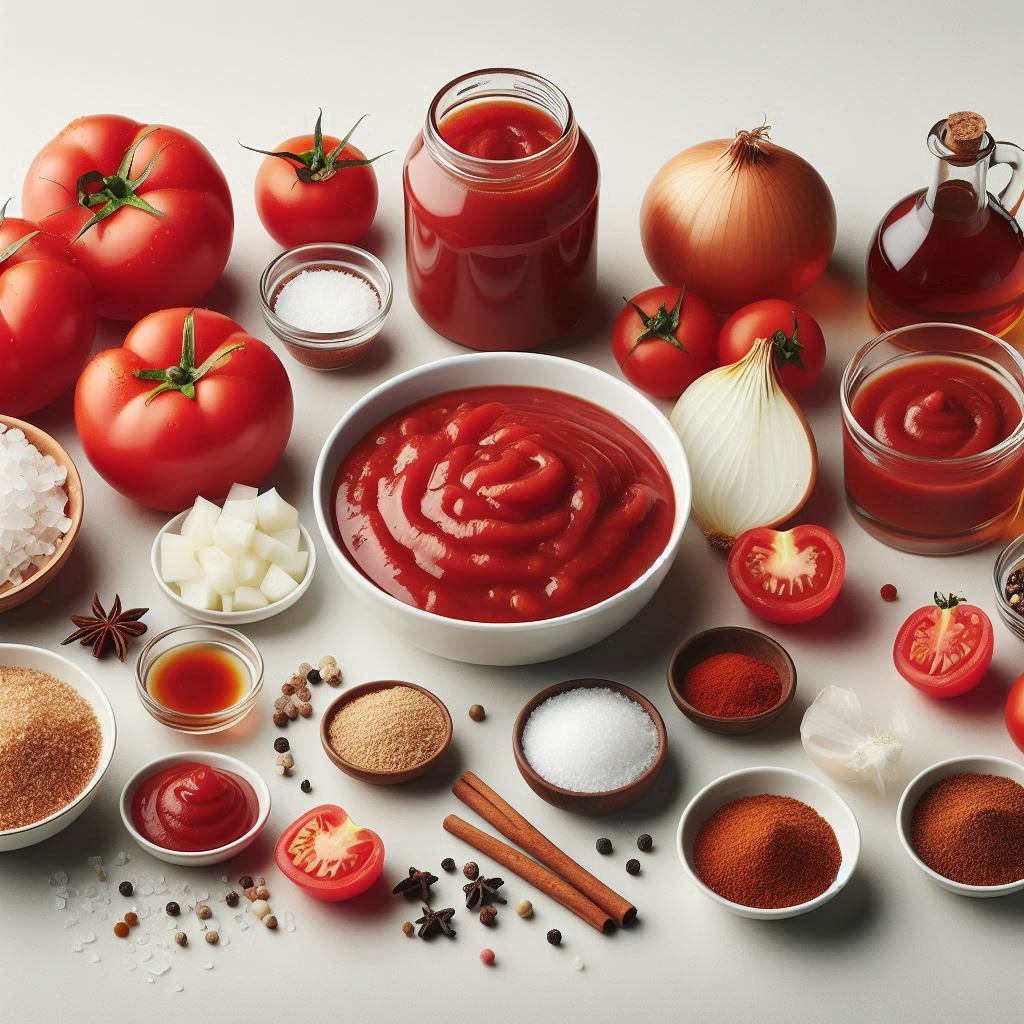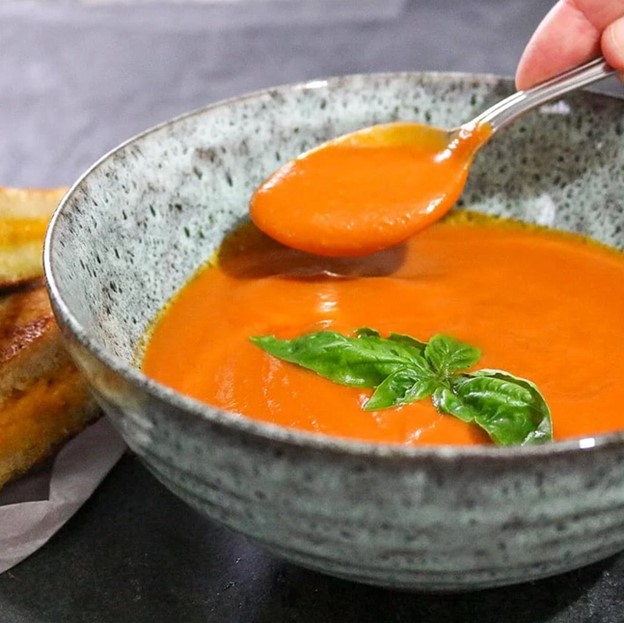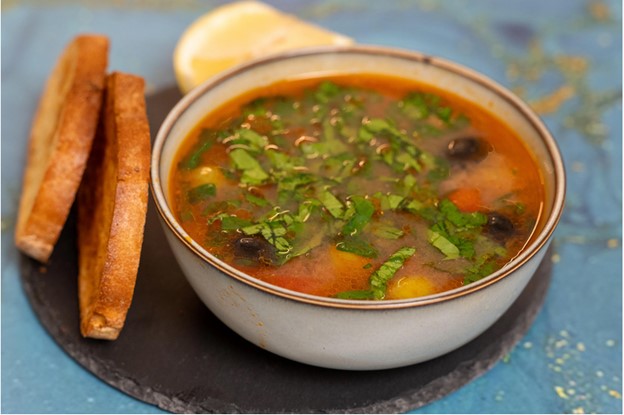Tomato soup is a comfort food enjoyed by people around the world. Whether it’s a cold winter night or a breezy autumn evening, a bowl of homemade tomato soup is always satisfying.
While canned tomato soup has its place in the pantry, nothing compares to the rich flavor and vibrant color of soup made with fresh tomatoes. This article will guide you through every step of making tomato soup from scratch using fresh, ripe tomatoes, along with helpful tips, nutritional insights, and delicious variations.
A Brief History of Tomato Soup
Table of Contents

Tomato soup has been around for centuries, with roots tracing back to Spanish and Italian cuisine. Tomatoes themselves were introduced to Europe from the Americas in the 16th century, and it took time before they became widely accepted in European kitchens due to initial fears they were poisonous (they belong to the nightshade family).
By the 19th century, tomato soup became a household favorite in many countries. In 1897, Joseph Campbell of the Campbell Soup Company developed a condensed version that revolutionized soup consumption. However, despite the convenience of canned soup, fresh tomato soup remains a beloved and wholesome choice for those who prefer cooking from scratch.
Why Use Fresh Tomatoes?

Using fresh tomatoes enhances both the flavor and nutritional value of tomato soup. Fresh tomatoes provide a depth of flavor that canned varieties often lack. Here are some key benefits:
- Richer taste – Fresh tomatoes bring natural sweetness and acidity.
- Higher nutritional content – They contain more vitamin C, potassium, and antioxidants like lycopene.
- Customizable texture – You can choose your preferred consistency – chunky or smooth.
- No preservatives or additives – Homemade soup is clean and natural.
Ingredients Required For Preparing Tomato Soup

Here’s a basic list of ingredients to prepare fresh tomato soup. This recipe serves about 4 people.
- Fresh tomatoes: 2.5 to 3 pounds (about 6-8 large tomatoes)
- Onion: 1 medium, chopped
- Garlic: 3-4 cloves, minced
- Olive oil or butter: 2 tablespoons
- Carrot (optional): 1 medium, chopped (adds natural sweetness)
- Vegetable or chicken broth: 2 cups
- Salt and pepper: To taste
- Sugar (optional): 1 teaspoon, to balance acidity if needed
- Basil (fresh or dried): A few leaves or 1 tsp dried
- Cream or milk (optional): For a creamy texture
For Garnish:
- Croutons
- Fresh basil or parsley
- A swirl of cream
Choosing the Right Tomatoes
For the best results, use ripe, juicy tomatoes. Some of the best varieties for soup include:
- Roma tomatoes (plum): Less watery, meaty, and flavorful.
- Beefsteak tomatoes: Large, juicy, and sweet.
- Heirloom tomatoes: Complex flavors, often sweeter.
- Cherry tomatoes: These can be used but might require more for volume.
If your tomatoes are under-ripe, consider roasting them to bring out their sweetness.
Step-by-Step Recipe To Prepare Tomato Soup

Prepare the Tomatoes
Score the bottom of each tomato with a shallow “X”. Drop them into boiling water for 30–60 seconds, then transfer to ice water. The skins should peel off easily.
Chop roughly or dice and set aside.
Sauté Aromatics
In a large pot, heat olive oil or butter over medium heat.
- Add chopped onions and cook until translucent, about 5 minutes.
- Add garlic and carrot (if using), and sauté another 2–3 minutes.
Cook the Tomatoes
Add the peeled and chopped tomatoes to the pot.
- Season with salt, pepper, and basil.
- Stir well and cook uncovered for 10–15 minutes until the tomatoes break down and release their juices.
Simmer with Broth
Add the broth and bring the mixture to a gentle boil.
- Reduce heat and simmer for 20–25 minutes.
- Taste and adjust seasoning. Add a pinch of sugar if the soup is too acidic.
Blend the Soup
- Use an immersion blender for a rustic texture or a countertop blender for a smoother finish. If using a blender, allow the soup to cool slightly before blending in batches.
- Return the blended soup to the pot and reheat gently.
Add Cream (Optional)
For a creamy soup, stir in a splash of heavy cream, half-and-half, or coconut milk.
- Do not boil after adding cream; simmer gently.
Serve
- Ladle into bowls.
- Garnish with fresh herbs, croutons, a swirl of cream, or a sprinkle of Parmesan cheese.
Tips for Best Results
- Roast tomatoes for deeper flavor: Halve tomatoes, drizzle with olive oil, and roast at 400°F (200°C) for 30–40 minutes before adding to soup.
- Balance acidity: A pinch of sugar or baking soda can neutralize excess acidity.
- Make it spicy: Add red pepper flakes or a chopped chili during sautéing.
- Add more veggies: Celery, bell peppers, or zucchini can be added for complexity.
Variations to Try
- Tomato Basil Soup
Add more fresh basil leaves at the end and blend them into the soup for an herby kick. - Spicy Tomato Soup
Sauté a chopped jalapeño or add red chili flakes. - Cream of Tomato Soup
Stir in ½ cup heavy cream and finish with a pat of butter. - Tomato Carrot Ginger Soup
Add chopped carrots and a 1-inch piece of fresh ginger during the sauté step for a sweet and zesty version. - Roasted Tomato and Garlic Soup
Roast tomatoes and garlic together, then blend for a rich and slightly smoky flavor.
Health Benefits of Tomato Soup
Tomato soup is not only delicious but also nutritious. Here are some key health benefits:
- Rich in antioxidants: Tomatoes contain lycopene, known to reduce the risk of heart disease and certain cancers.
- Boosts immunity: High in vitamin C, which helps strengthen the immune system.
- Low in calories: A healthy option for weight management.
- Heart-healthy: Potassium in tomatoes supports heart function.
- Good for skin and eyes: Vitamin A and C promote skin health and vision.
Storage and Freezing
Refrigerator: Store leftovers in an airtight container for up to 4 days.
Freezer: Tomato soup freezes well. Let it cool, then store in freezer-safe bags or containers for up to 3 months. Avoid freezing tomatoes or tomato soups with dairy; add cream after reheating.
Serving Suggestions

- Tomato soup pairs beautifully with:
- Grilled cheese sandwich
- Garlic bread
- Salads (like Caesar or mixed greens)
- Stuffed bell peppers
- Roasted vegetables
Final Thoughts
Making tomato soup with fresh tomatoes is a rewarding culinary experience. It allows you to enjoy the full-bodied flavor of ripe tomatoes and tailor the soup to your taste. Whether you prefer it creamy or rustic, spicy or sweet, this dish is a timeless classic that brings warmth and nourishment to any table.
So the next time you have a batch of fresh tomatoes, skip the can and create your own bowl of comfort. Your taste buds—and your body—will thank you.
Leave a Reply